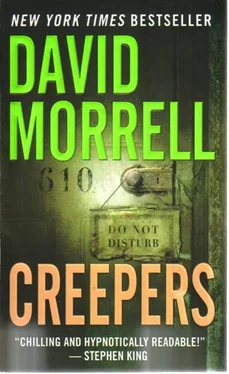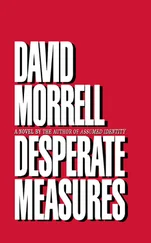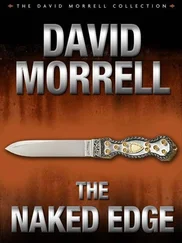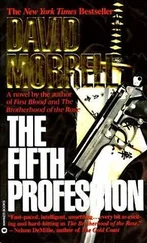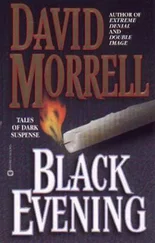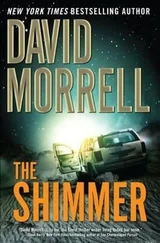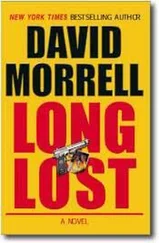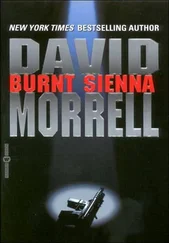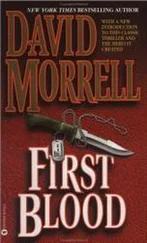"You haven't lost me."
Sorrow made him feel choked. "We'd better go. We need to help Vinnie."
They stumbled through the dark rain toward the boardwalk. When they reached the hollow in the beach, Vinnie was unconscious. They lifted him from the sand.
"Do I hear…" Amanda turned.
"Sirens."
Out of breath, they staggered with Vinnie, following the boardwalk toward the sound. Balenger's legs didn't seem a part of him, but he kept struggling forward just as Amanda did. He looked at her. How he wished she was Diane, or at least that he could believe she was Diane.
Delirious, he must have said that out loud, because Amanda turned to him. "Keep remembering, I'm not her, but you haven't lost me."
They reached stairs to the boardwalk. Avoiding broken planks, they ascended wearily, sinking to their knees, then continuing upward. The light of the flames grew. Balenger felt a warm wind from the fire. Then the wind was hot, although Balenger couldn't stop shivering. The sirens wailed to a halt. Firemen jumped from a truck. Policemen scrambled from cruisers.
The top of the hotel's pyramid caved in. Sparks flew. Consumed by fire, the sixth level collapsed. There go the gold coins, Balenger thought. He remembered the double eagle in his pocket. The words on it: In God We Trust.
Policemen ran to them, one of them shouting, "What happened to you?"
As Balenger slumped to the ground, he heard the clang clang clang of the tolling sheet metal. Another section of the building collapsed. But hell had many levels. So did the past. "What happened to us?" he murmured. He could barely force the words out. "The Paragon Hotel."
AUTHOR'S NOTE: AN OBSESSION WITH THE PAST
As every author knows, the most frequent question we're asked is, "Where do you get your ideas?" Creepers. Although I wasn't familiar with that term until recently, my fascination with the concept has gripped me for most of my life.
When I was nine, my family lived in a cramped apartment above a restaurant that catered to drinkers from the area's numerous bars. (This was in a city called Kitchener in southern Ontario in Canada.) I often heard drunks fighting in the alley beneath my bedroom window. There was plenty of fighting in the apartment, as well. Although my mother and my stepfather never came to blows, their arguments made me so afraid that many nights I stuffed pillows under my bedding to make it look as if I slept there while I lay awake under the bed.
I often escaped that apartment and wandered the streets, where I learned the secrets of every alley and parking lot within ten blocks. I also learned the secrets of abandoned buildings. In retrospect, I'm amazed that I didn't run into fatal trouble in some of those buildings. But I was a street kid, a survivor, and the worst that happened to me was a cat bite on a wrist and a nail through a foot, both of which caused blood poisoning.
Those abandoned buildings-a house, a factory, and an apartment complex-fascinated me. The smashed windows, the moldy wallpaper, the peeling paint, the musty smell of the past, lured me back repeatedly. The most interesting building was the apartment complex because, although deserted, it wasn't empty. Tenants had abandoned tables, chairs, dishes, pots, lamps, and sofas. Most were in such poor shape that it was obvious why the objects hadn't been taken. Nonetheless, combined with magazines and newspapers left behind, the tables and chairs and dishes created the illusion that people still lived there-ghostly remnants of the life that once flourished in the building.
I felt this more than I understood it. Treading cautiously up creaky staircases, stepping around fallen plaster and holes in floors, peering into decaying rooms, I gazed in wonder at discoveries I made. Pigeons roosted on cupboards. Mice nested in sofas. Fungus grew on walls. Weeds sprouted on watery windowsills. Some of the yellowed newspapers and magazines dated back to when I was born.
But no discovery meant more to me than a record album I found on a cracked linoleum floor next to a three-legged table that lay on its side. Eventually, I learned that it was called an album because, prior to the 1950s, phonograph records were made from thick, easily breakable shellac, had only one song on each side, and were stored in paper sleeves within binders that resembled photograph albums. At the time of my discovery, discs of this sort (which played at 78 rpm) had been superseded by thin, long-playing, vinyl discs that were far more sturdy, had as many as eight songs on each side, and played at 33 1/3 rpm.
I'd never seen an album. When I opened its cover, I felt an awe that was only slightly reduced by the scrape of broken shellac. Two of the discs were shattered. But the majority (four, as I recall) remained intact. Clutching this treasure, I hurried home. Our radio had a record player attached to it. I switched its dial to 78 rpm (a common feature in those days) and put on one of the discs.
I played the song repeatedly. Today, I can still hear the scratchy tune. I've never forgotten its title: "Those Wedding Bells Are Breaking Up That Old Gang of Mine." An Internet search tells me that the song was written in 1929 by Irving Kahal, Willie Raskin, and Sammy Fain. Melodic and rhythmic, it was an instant hit, recorded frequently over the years. But at the time, I knew nothing of that. Nor did I understand the emotions of the lyrics, which described the loneliness of a young man whose friends are all getting married. What captivated me was that scratchy sound. It came palpably from the past and served as a time tunnel through which my imagination could travel back to other years. I visualized the vocal group in unfamiliar clothes, surrounded by unfamiliar objects, singing out-of-fashion music in a setting that was always fuzzy and in black-and-white. Regrettably, I don't recall the group's name. So much for immortality.
Since then, I've obeyed a compulsion to investigate many other abandoned buildings, not to mention tunnels and storm drains, although I never again found anything so memorable as that phonograph album. I assumed that my traumatic childhood accounted for my fascination with crumbling deserted structures and that I was alone in my obsession with links to the past. But I now realize that there are many like me.
They call themselves urban explorers, urban adventurers, and urban speleologists. Their nickname is creepers. If you type "urban explorer" into Yahoo, you'll find an astonishing 170,000 Internet contacts. Type that name into Google, and you'll find an even more astonishing 225,000 contacts. It's a reasonable assumption that each of these links isn't represented by just one lonely explorer. After all, nobody's going to put together a site if he/she doesn't have a sense of community. Those hundreds of thousands of contacts are groups, and logic suggests that for every one that publicizes itself, there are many others that prefer to be hidden.
Those who wish to remain anonymous have a good reason. Bear in mind, urban exploration is illegal. It involves the invasion of private property. Plus, it's so unsafe it can be deadly. The authorities tend to insist on jail terms and/or serious fines to discourage it. As a consequence, many of these websites emphasize that explorers should get permission from property owners and that they should always follow safety precautions and never do anything against the law. Those warnings sound socially responsible, but my assumption is that for many urban explorers, part of the appeal is the risk and thrill of doing what's forbidden. It's significant that their slang term for entering a deserted building borrows from the covert-ops military expression for invading hostile territory: infiltration. As the website www.infiltration.org indicates, the objective is "places you're not supposed to go."
Читать дальше
